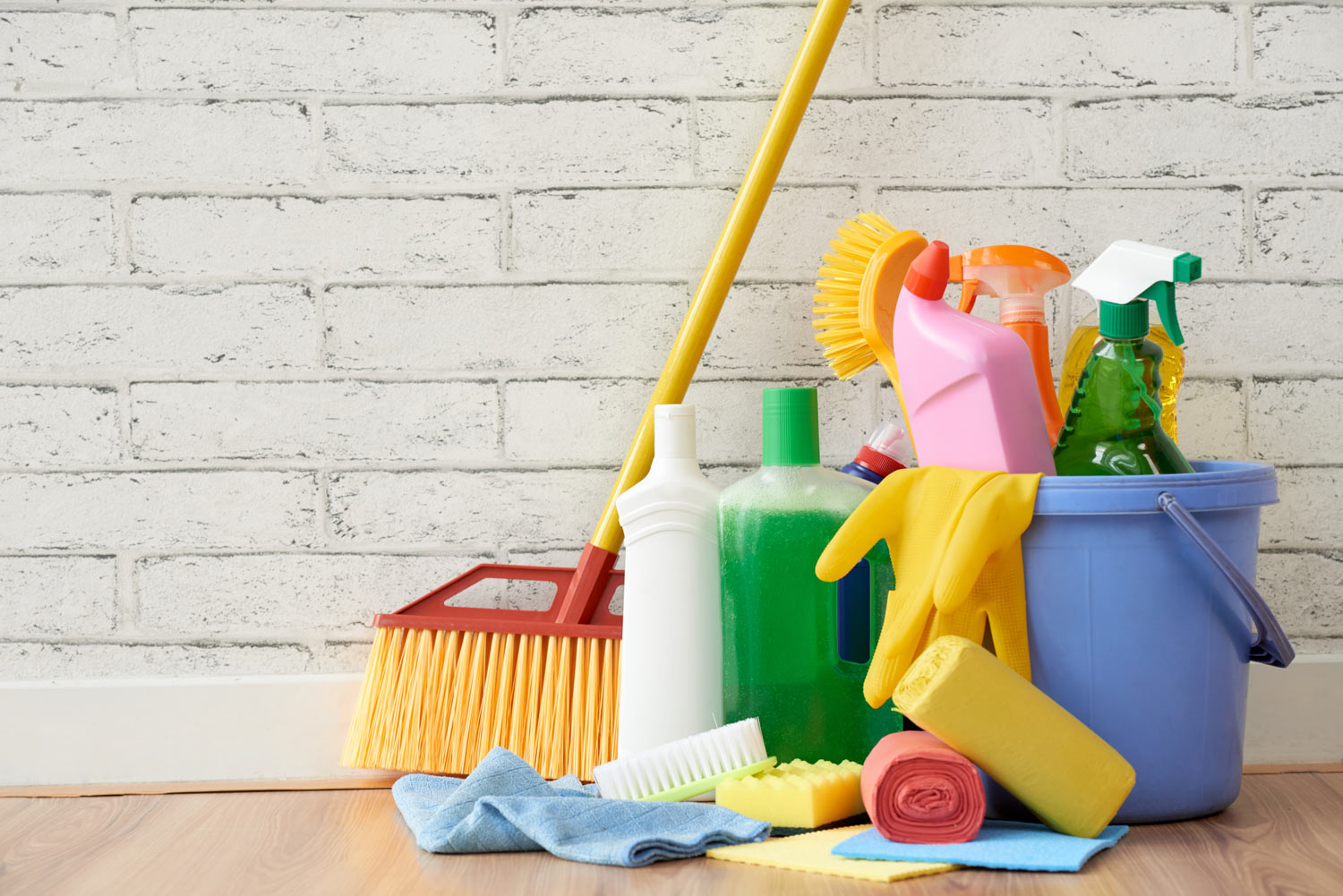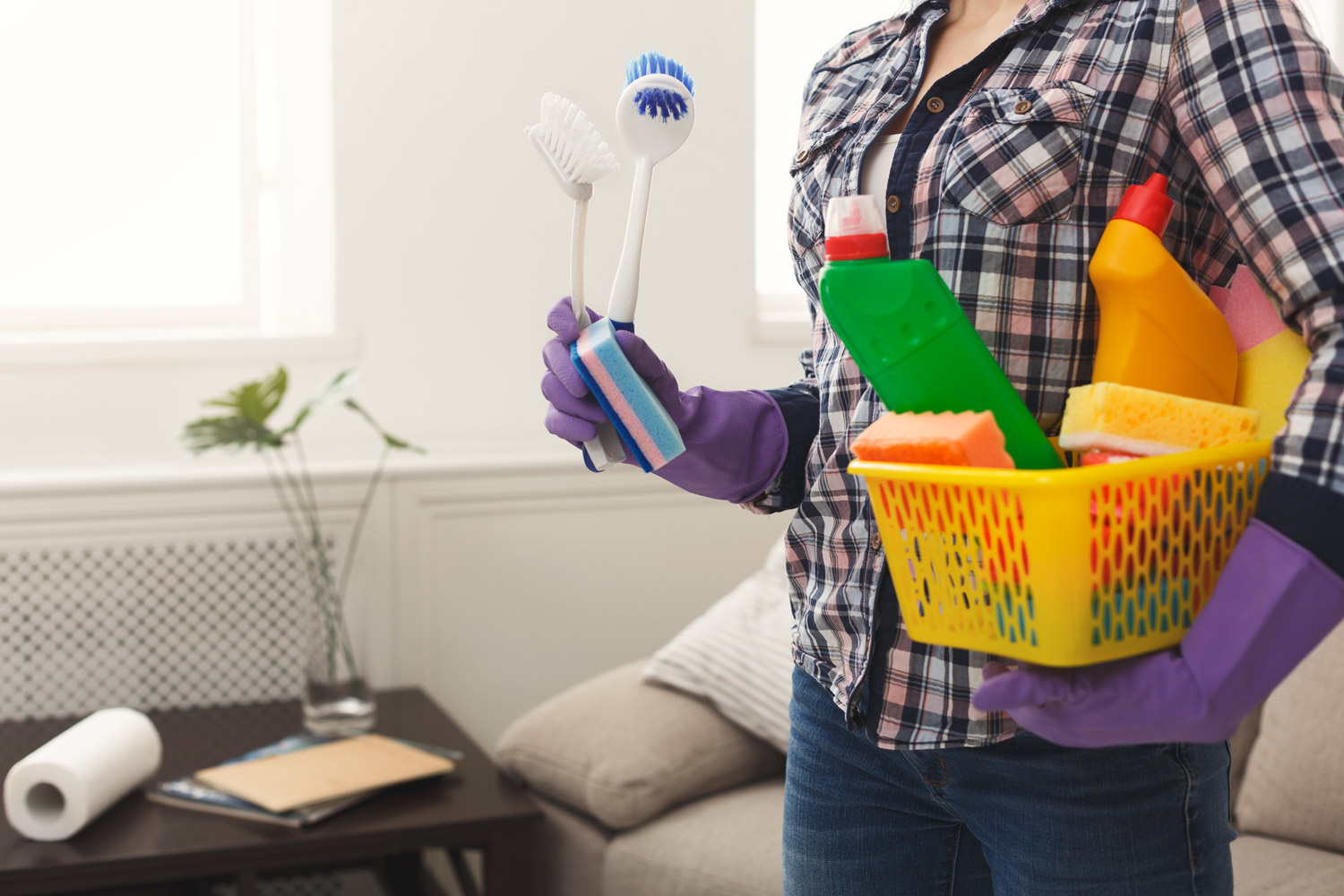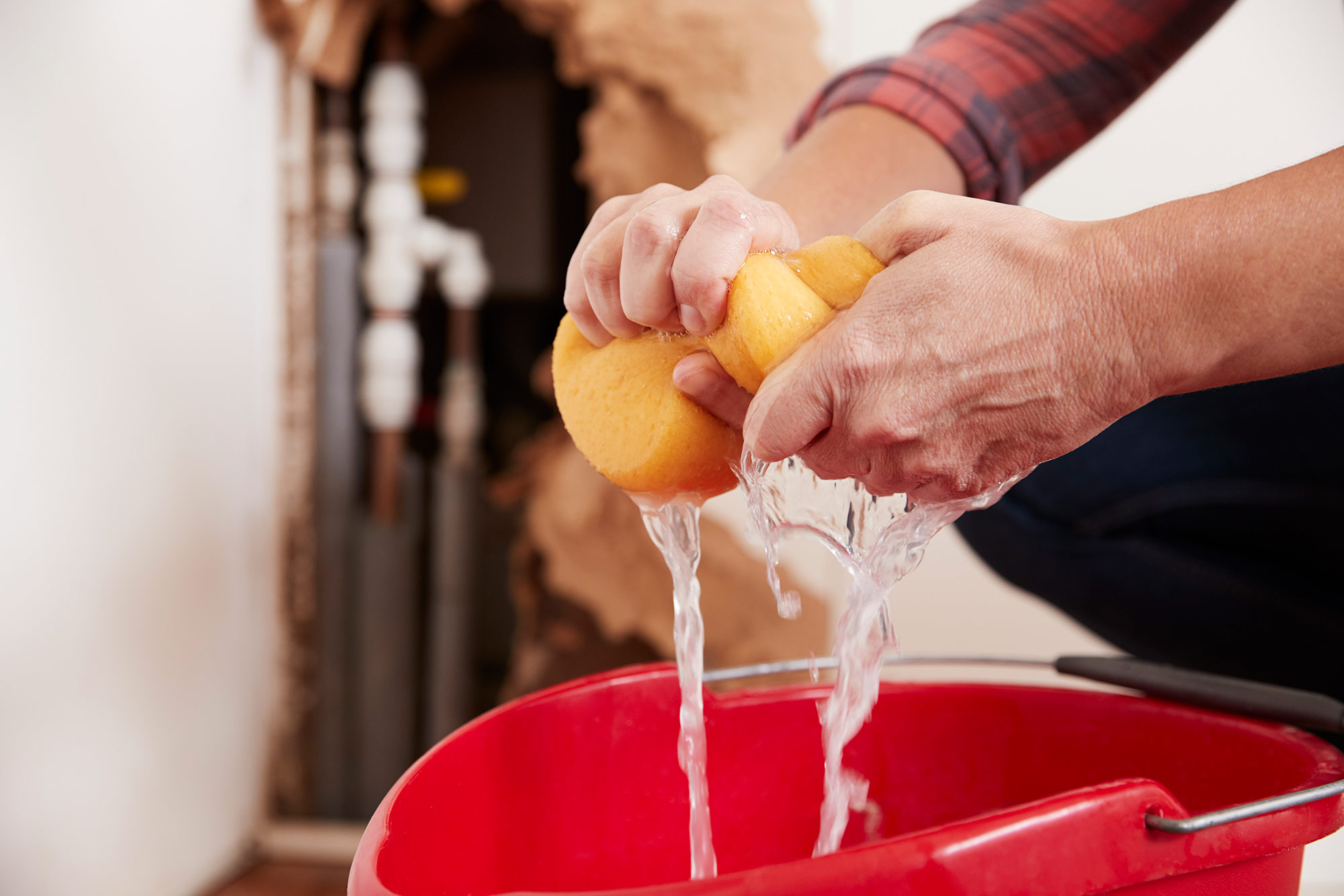
After a flood, your family must be cautious of any and all items the floodwaters swept over. You will want to begin to clean up immediately, but your safety comes first. The experts at www.floodsmart.gov recommend that you wear gloves and boots to clean and disinfect.
Wet items need to be cleaned with a disinfectant and allowed to dry out. Look for mold or mildew. Sometimes vinegar will clean items and kill mildew. It just depends on how damaged the item is.
You want to remove as much moisture in your home as you can to prevent mold. All items that got soaked and are still damp, such as carpets, bedding, and furniture must be removed and taken outside to dry out, if possible. Pull up the carpet, the padding, and put it outside. All surfaces, such as walls, floors, doors, etc., must be dried and disinfected.
If there is mold on a large area of the carpet, you are better off tossing it. If it’s a small area, less then 10-feet square, you can spray it with vinegar, let dry to see if that takes care of the problem. If you still notice mold or smell it, it must be cleaned and disinfected.
Check your home owner’s policy to find out if renting or buying dehumidifiers is covered. If your electricity is up and running, turn the air conditioning (not the heat) to pull humidity from the air and help speed up the drying time. Also, portable box fans will help circulate the air and turn on any overhead fans.
If the walls are damaged, depending on how high the water came into your home, remove the baseboards if you can, and poke some holes into the wall (I’ve used a screwdriver) at the bottom to help get fresh air in there. For more information on after flood care and cleanup, visit: www.ready.gov/floods. Stay informed and stay safe.

Products to Help Clean Up After a Flood
Here is a list of must-have products to help you clean up. Keep this mind also, if you have a water leak in your house. There are good all-around cleaning agents to use. If you are trying to clean up yourself, do yourself a favor and buy the largest size or get two of each to have on hand.
Chlorine Bleach
(Sodium hypochlorite) – Also disinfects. Be sure to follow label directions. More or a stronger solution is not better! According to the EPA, do NOT use chlorine bleach to remove mold as a general guideline.
Oxygen Bleach
(Sodium perborate/Sodium percarbonate) – May sometimes be combined with bleach. Use this to wash colored clothing or linens that have come in contact with floodwaters. Or use your regular detergent and add oxygen bleach.
Hydrogen Peroxide
A colorless liquid that has strong oxidizing properties. It can be diluted and added to bleaches and other disinfectants. It kills many molds and mildew. For example, it will kill mildew on grout and cement steps.
Sudsy ammonia versus non-sudsy ammonia
The major difference between the clear (non-sudsy) and sudsy ammonia is simply the added detergent. While both are suitable for the same cleaning tasks, one might be recommended over the other.
White Distilled Vinegar
Made from the fermentation of diluted, distilled alcohol.
Apple Cider Vinegar
Created from apples.
Vinegar
In the U.S., this is typically diluted to 5% acidity, but vinegar with higher acidity levels (9%) can sometimes be found. The higher the acidity level, the stronger the vinegar. I use the 9%, also called pickling vinegar, for dealing with musty smelling drains, killing mildew on the driveway (pour it on full strength and scrub with a broom), and even soaking plastic hairbrushes and combs to get them clean.
Baking Soda
A must-have for every household. Use to scrub surfaces without scratching, deodorize carpets, furniture, and beds. Sprinkle on, let sit for 30 minutes or so, and just vacuum up. Pour ½ cup down a stinky drain, add 1 cup cheap vinegar and watch it foam up! Let set or 10-15 minutes then run about 30 seconds of hot water to flush it through the pipes.

Cleaning Solutions You Can Make: How to Mix
Combine the solutions in a clean jug or bottle with a pump nozzle for easy spritzing and spraying (MUST label the bottle clearly). For larger solutions, mix in a clean bucket.
What not to mix
Always check the ingredients before combining them. Never mix products containing ammonia with those containing bleach. The result could be deadly. Remember, even mild ingredients when combined together can be toxic, so follow these formulas exactly and that includes ALWAYS checking the label before combining ingredients!
Formula One
Combine ½ cup of non-sudsing ammonia, ½ cup rubbing alcohol, and 1 teaspoon dishwashing liquid with enough water to make 1 gallon of cleaner.
Formula Two
Put hydrogen peroxide (3%) in an opaque spray bottle. Spray on areas with mold. If there’s mold or mildew on the floor of the shower or tub, pour the mixture directly from the bottle, let it dry. See note below about storage*
Formula Three
Mix the juice from ½ lemon, 1 tablespoon household bleach, and a cup of water. Carefully pour it into a spray bottle and spray the solution on the mildewed area. Let the solution stand until dry.
Hint
Hydrogen peroxide and chlorine bleaches are heat and light-sensitive. Formulas made with these ingredients should be used within a day. Both formulas should be stored in clearly marked, opaque containers.
Simple Sanitizing Spray
Some of the sanitizing sprays you buy are basically a little bleach and water. Use the following formula to make: Mix 1 tablespoon of household bleach with 1 quart of water (.01 bleach to 99.9% water). NOTE: This mixture isn’t shelf-stable, meaning it’ll lose its cleaning power when exposed to light or heat for too long, so mix just enough to use for the cleaning tasks at hand each day or so.
Sponges
Sponges (and cleaning towels) can harbor all sorts of yucky stuff, so wash them well each time you use them. Sanitize sponges by soaking them in a gallon of hot water and ¾ bleach for about 5 minutes. Remember, the sponges are cheap! Replace them every few months or more often.
Note
If you have special items (books, paperwork, etc.) that have gotten wet, try this hint that I have used many times. Put the item in a large plastic bag (leave open), and place it in the freezer. This will STOP mold and mildew from growing any more and will dry the paper out. It may take a week or longer, but it’s sure worth trying.